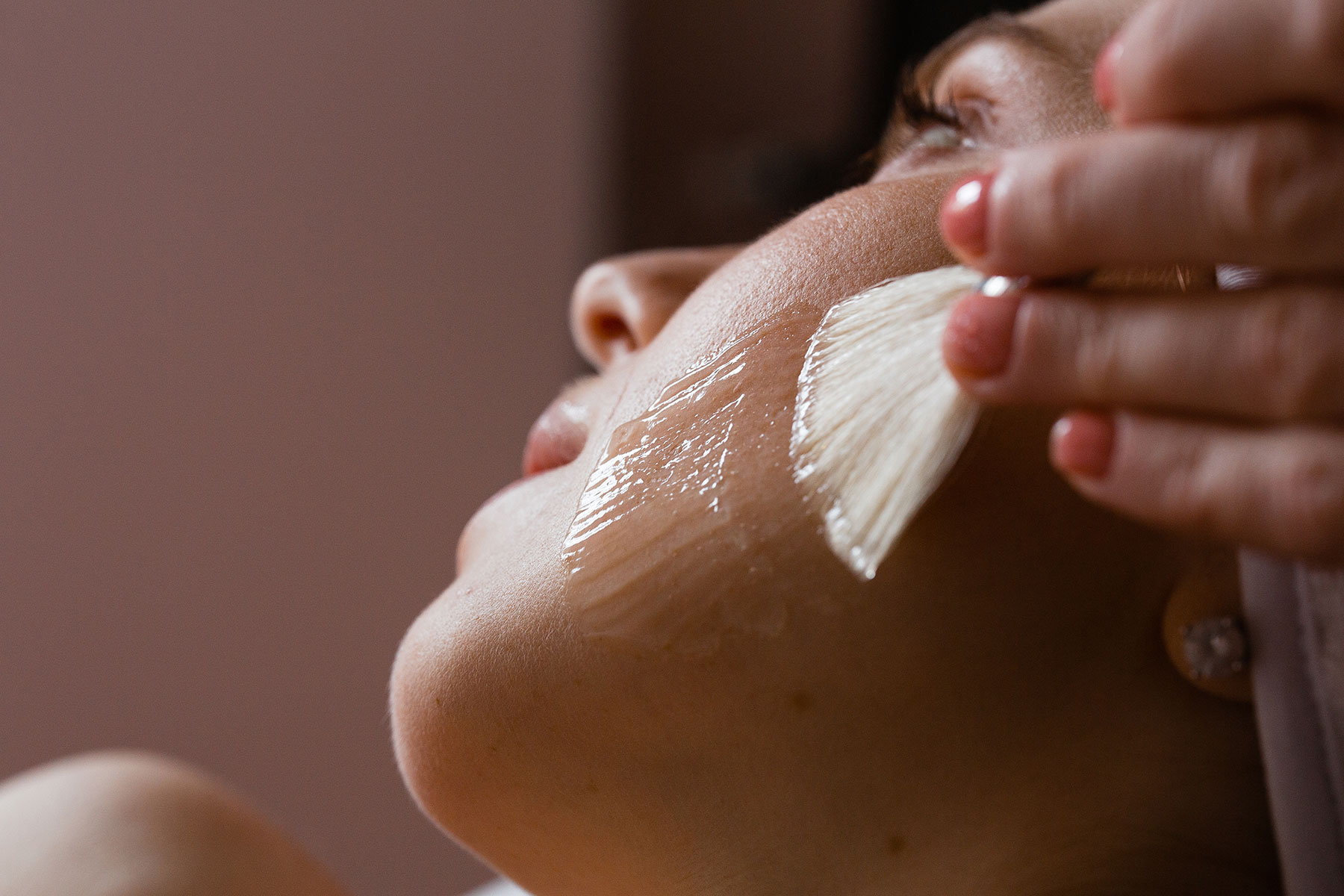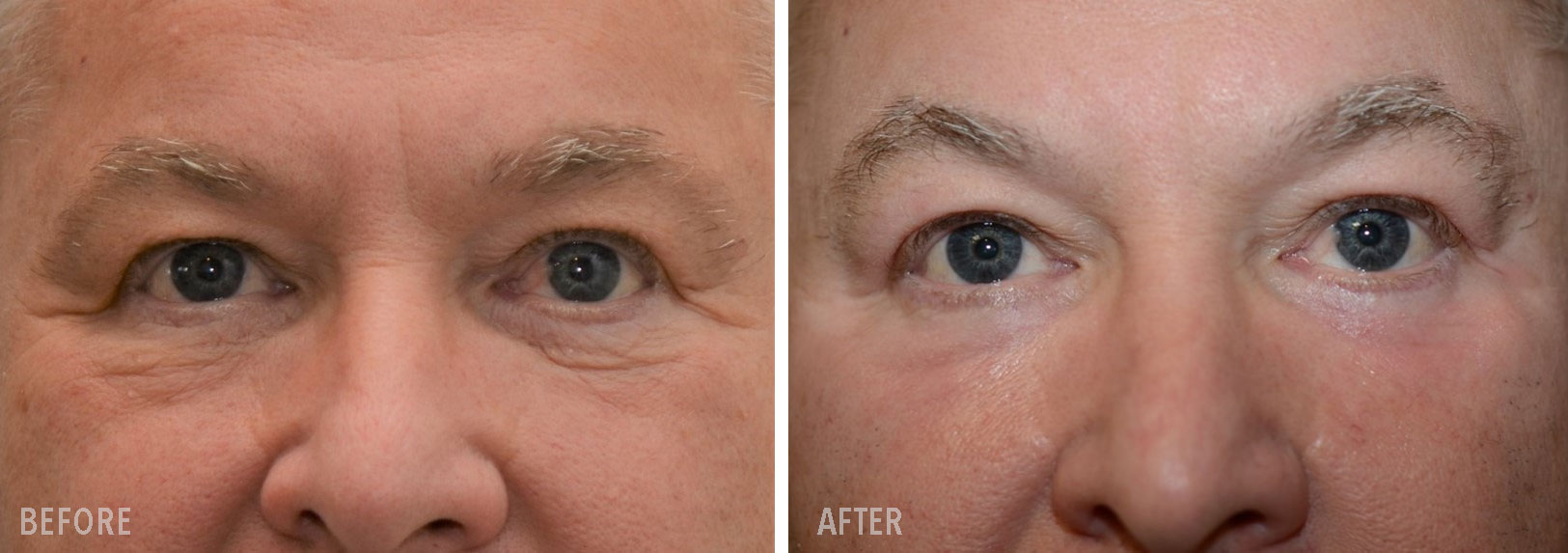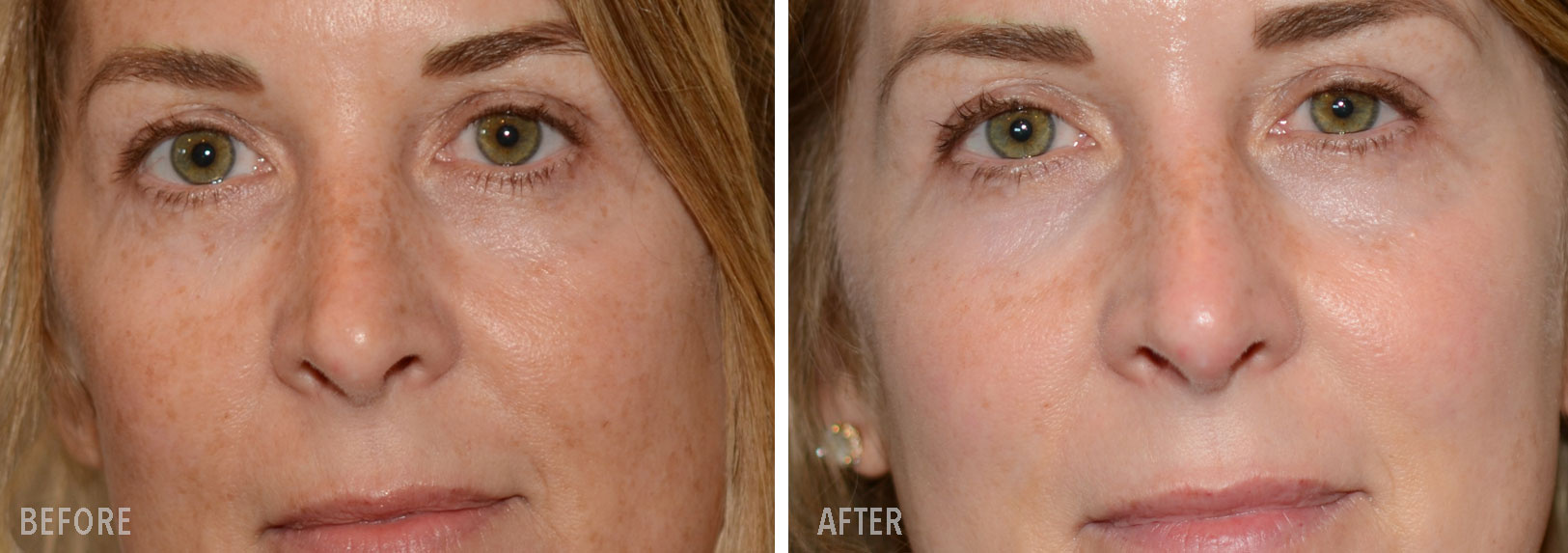
8 Frequently Asked Chemical Peel Questions, Answered by a Specialist
You’ve likely heard of chemical peels. Chemical peels are the third most common non-surgical cosmetic procedure in the United States, and rightfully so. Chemical peels are multi-functional, affordable, and there is one for nearly every type of skin.
1. What is a chemical peel?
A chemical peel is a non-surgical aesthetic procedure in which an acidic solution is applied to the skin, breaking the bonds between old skin cells and effectively sloughing off the outermost layer of old, dead skin. This removal of dead skin cells reveals new, fresh skin, encourages new skin cell development and boosts collagen production. Peels improve a number of conditions including, but not limited to: wrinkles, acne scarring, scarring, uneven pigment, and sunspots. There are a variety of solutions intended to address specific conditions and degrees of damage. Depending on the extent of correction needed, the depth and intensity of the chemical peel can be adjusted, addressing mild to severe cases.
Chemical peels are broken up into three different categories: Superficial or Light Peels, Medium Peels, and Deep Peels, each category correlating to the degree of correction needed.
If you’ve never had a chemical peel before or perhaps only have a small amount of skin damage, active acne or sensitive skin, a superficial peel may be sufficient. For more severe cases of acne scarring, pigment irregularities, sun damage and deep wrinkles, a medium or deep peel may be prescribed.

2. You’re going to put acid on my face?!
Okay, this is technically true. Chemical peels are composed of an acidic solution, but the acids used in skin treatments are not the same as the acids used in industrial practices. The acids used in skin treatments are what are known as alpha-hydroxy acid (AHA) or beta-hydroxy acid (BHA). AHAs are water-soluble acids derived from sugary fruits, and BHAs are oil-soluble acids made from the bark of willow and sweet birch trees.
The type of acid used in your chemical peel will depend on the specific condition you are wishing to treat. While both AHAs and BHAs have exfoliating properties, each one is more efficient at tackling different skin maladies than the other.
For example, if you’re looking to treat dry skin and signs of aging, AHAs are typically more effective, whereas BHAs are generally better at addressing active acne.
AHAs and BHAs are a common ingredient in many over-the-counter cleaners and skin treatments. These are the same acids that are used in chemical peels, but much milder doses.
Most common Alpha-Hydroxy Acids:
- Glycolic Acid
- Lactic Acid
- Malic acid
- Tartaric Acid
- Citric Acid
- Mandelic Acid
Most common Beta-Hydroxy Acids:
- Salicylic Acid (salicylate, sodium salicylate,
and willow extract) - Beta Hydroxybutanoic Acid
- Tropic Acid
- Trethocanic Acid
3. What conditions do chemical peels address?
As previously mentioned, chemical peels are effective in treating a whole host of skin maladies from active acne, to acne scarring, uneven pigment to sun damage and fine lines to severe wrinkles. They are also good for rejuvenating rough and aged skin.
4. Do chemical peels hurt?
Superficial or light and medium peels are left on for a shorter period of time and a mild numbing cream may be required prior to application. You may feel some slight burning and itching whilst the peel does it’s work but most patients do not report severe discomfort.
For very deep peels, anesthesia is often needed and in some instances, patients may be sedated. In these cases, your doctor will usually prescribe pain medication post-treatment.

5. How long does the procedure take and when can I expect to see results?
A chemical peel can take anywhere from a few minutes to an hour. Depending on your treatment, new skin will begin to develop anywhere from one to two weeks post treatment.
6. What can I expect during recovery?
Recovery time from a chemical peel will vary depending on the depth and intensity of the treatment.
Light peels usually only take up to seven days to heal. During this time, you can expect your face to peel and appear sunburnt and some patients experience redness for up to a month. Most patients who have a light peel can usually wear makeup the next day to cover any redness.
Medium peels may induce some swelling, which can be soothed with ice packs. Your doctor will apply a protective ointment for dryness and you may take over the counter pain medications for any discomfort. Recovery time from a medium peel is usually 7-14 days, and you can begin to apply cosmetics after 5-7 days.
For deep peels, you will experience more severe redness and swelling. In some cases, dressings may be applied to your skin after your treatment for protection and for very deep peels, painkillers are often prescribed. New skin will develop after about two weeks, at which time you can apply make-up to obscure any residual redness.
Redness from a light peel usually subsides within a couple of weeks while redness from a medium or deep peel may last several months.
In all cases, your skin will be more sun-sensitive post treatment and it is extremely important to wear sunscreen and sun protection. It is also recommended that you use emollients and fragrance-free products, and that you avoid retinol, acids and downtime exercise.
7. What results can I expect?
This really depends on what condition your skin is in prior to the chemical peel and what your individual skin goals are. Generally, once your skin has healed, you can expect to see smoother, brighter, younger, more radiant, even-toned skin.
You may begin to see results from light peels immediately post treatment, and the full effects will be visible between 7-10 days. Results from medium and deep peels will develop in 1-2 weeks.
Before and After | AMADI AESTHETICS
Our Amadi Chemical Peel is a non-surgical cosmetic procedure used to peel away the skin’s top layer to improve sun-damaged unevenly pigmented and wrinkled skin. Improving the evenness of color and texture in your skin creates a youthful look and restores a healthy, luminous, and radiant appearance.


8. Who is a good candidate?
There is a chemical peel for almost all skin types. However, patients with sensitive or darker skin tones may want to avoid deeper peels though may still benefit from light peels.
The only person who can advise you on which chemical peel or acidic solution is right for you is your skincare provider who will examine your skin and thoroughly discuss with you your skin goals. Factors that your provider will take into consideration are your skin tone, skin thickness, and type of skin damage that you wish to improve. Prior history of skin conditions and treatments will also be elicited. As with any cosmetic procedure, a consultation is required prior to booking in for a chemical peel.

Risks and complications:
Light, medium and deep peels run the risk of causing dry, flaky skin and post-inflammatory hyperpigmentation, though this is rare. It also is not uncommon to experience post-peel acne break-outs and if this occurs, it is important to alert your physician as they may recommend an oral prescription. It is also important to alert your doctor if you are prone to cold sores as a chemical peel may induce outbreaks.
As always, be completely honest with your doctor about any medication you are taking as this can greatly affect your individual reaction.
Serious complications, such as infections or scarring from deep chemical peels are possible, but very rare, so long as they are done correctly and safely and your skin is properly prepared beforehand. In our practice, deep chemical peels are only administered by Dr. Amadi, our Nationally recognized OculoFacial Plastic Surgeon.
Book a consultation today with one of our highly skilled providers to learn more about how a chemical peel could benefit you!
Learn more:
Amadi Med SPA
Lorem ipsum dolor sit amet, consectetur adipiscing elit. In nec erat in nibh pellentesque vestibulum eget eu massa. Lorem ipsum dolor sit amet,